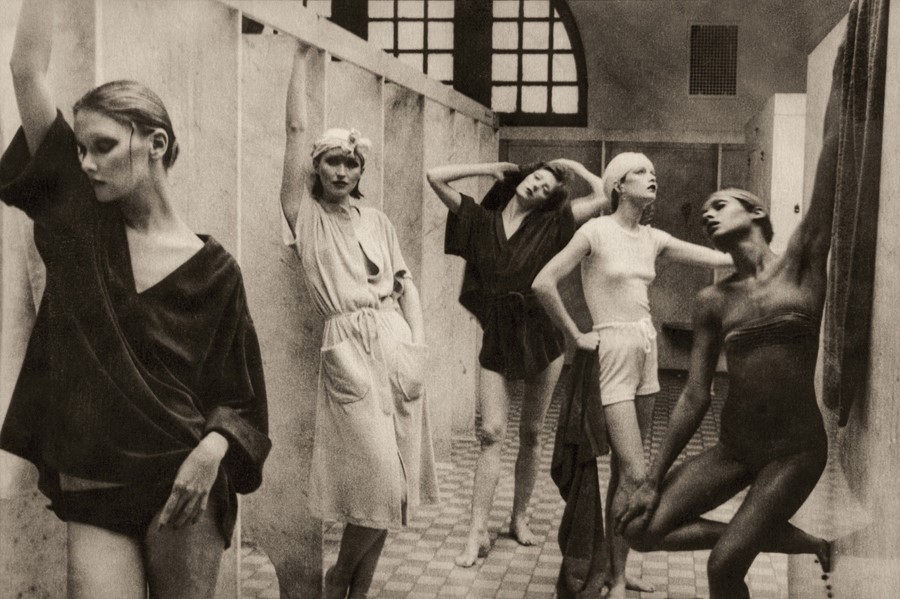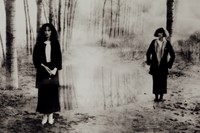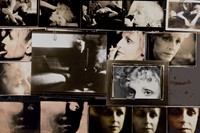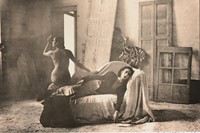A new publication compiles the late American photographer’s psychologically and poetically charged photo collages, made during the 1970s
Deborah Turbeville began her career as a fashion editor and photographer, but by the time of her death in 2013, she left a photographic legacy that had defied the genre. Known for her distinctively surreal and sepia images that enigmatically evoked the passing of time, Turbeville’s signature pointed to a bygone history rather than contemporary life or the world of fashion.
Beginning her career working for magazines such as Vogue Italia, Mademoiselle and Harper’s Bazaar, Turbeville’s early forays in fashion pushed her own work in another – distinctively non-commercial – direction. Though her imagination appeared to yearn for the past, the resulting work was a radical reinvention of modern photography. “[Her] entire body of work is a meditation on the medium of photography,” writes Nathalie Herschdorfer, whose new book Deborah Turbeville: Photocollage will soon be released by Thames & Hudson. “From her earliest images onwards, she constantly broke away from the idea of ‘pretty’ pictures and went beyond the role of the artist-photographer whose job ends with composition and framing.”
An avid experimenter in technique, Turbeville’s practice flourished in the darkroom, where she developed her unpolished, stained, and faded aesthetic. Like a painter playing with pigment and texture, she artfully tampered with her negatives to create distorted effects; smearing dust on them, scratching, tearing and overexposing them to light. By doing so, she distilled the atmosphere of place and time, offering an alternative mode of photography that freed itself from conventional representations. Psychologically and poetically charged, her images are at once enigmatic and elegiac, surreal and subversive.
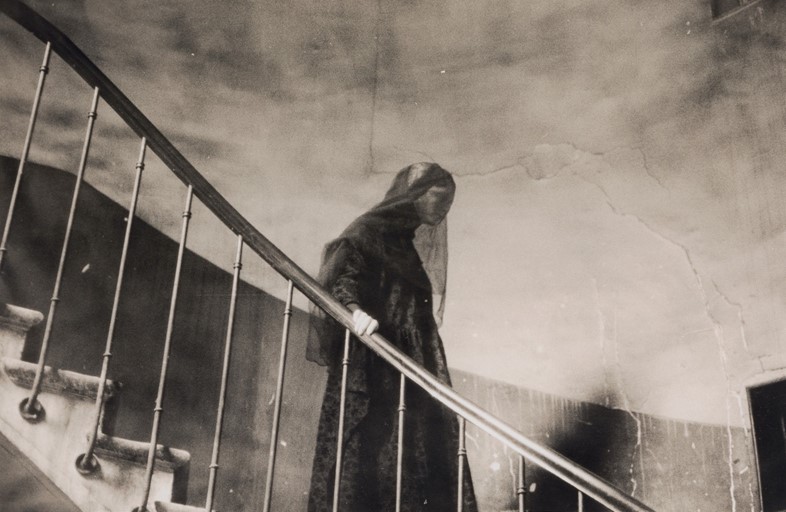
In the late 1970s, Turbeville departed New York for Paris. Her longstanding fascination with other histories and cultures – especially those of France, Italy and, later, Russia – as well as her admiration of the French Surrealists, drew her to the capital. “Her role models included photographers such as Brassaï, Jacques Henri Lartigue and August Sander,” writes Anna Tellgren in the publication. But beyond the history of photography, “paintings and, especially film, were her most important sources of inspiration.” In particular, post-war New Wave, European cinema and the films of Jean Vigo, Rainer Werner Fassbinder, Ingmar Bergman, Federico Fellini and Michelangelo Antonioni.
In Paris, Turbeville immersed herself amongst the 19th-century Haussmannian buildings and the historic sites of the Left Bank, particularly around the École des Beaux-Arts; its storied Neoclassical interiors and hallways appealing to her longstanding fascination with architecture and buildings pulsating with history. Like the Paris-based 19th-century photographer Eugène Atget, her photographs distilled the historic aura of the city; ghostly images infused with nostalgia and romanticism. In 1981, she published Unseen Versailles – a body of work that captured the labyrinthine palace, its hidden opulent chambers and derelict Baroque sculpture parks.

Beyond photography, Turbeville also championed the medium of collage. Like her Postmodern contemporary Andy Warhol, it allowed her to self-reflexively explore replication and reproduction in an era of mass media and distribution. But her work was less premeditated than Warhol’s; she worked intuitively and spontaneously, nor did she seek to self-brand or promote. According to those who knew her, she remained a slightly mysterious figure in the art world. “The artist was a solitary figure who carried a world inside herself” writes Carla Sozzani. “The storyteller of a unique realm that belonged to her and which she allowed us to glimpse through her work.”
An artistic anomaly of her time, Turbeville’s commercial beginnings propelled her to forge her own artistic path; one rooted in avant-garde experimentation. The images left behind symbolise her quest for beauty by crystallising the past; simple constructions of her vivid imagination that expressed her desire for self-expression.
Deborah Turbeville: Photocollage, published by Thames & Hudson, is out on October 12.
